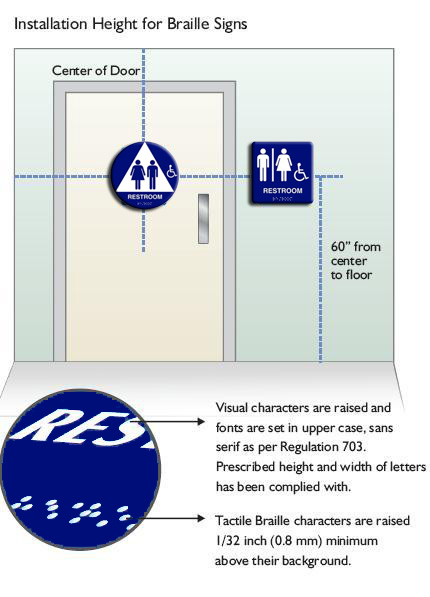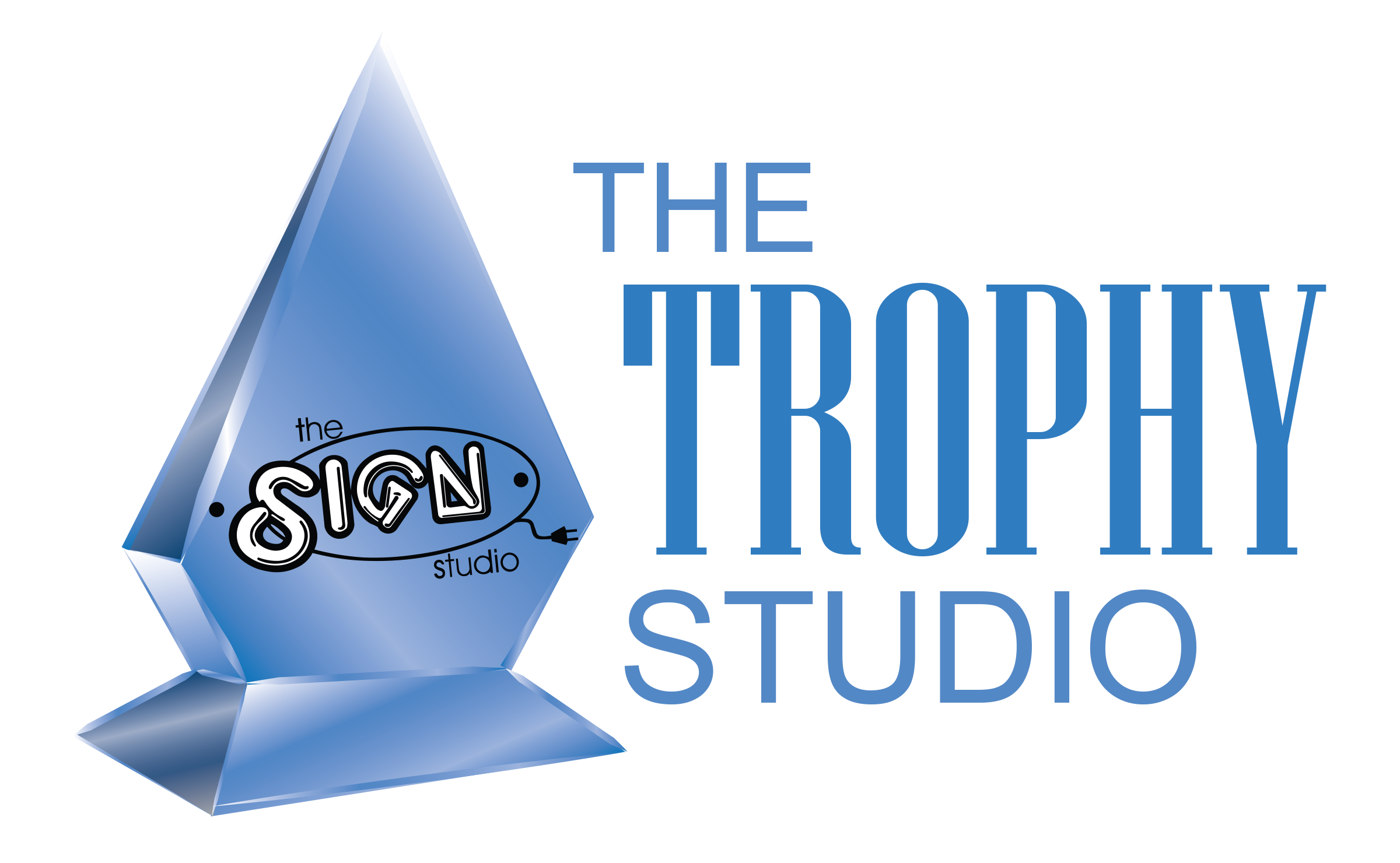 LA Signs | A Comprehensive Review on California Restroom & Bathroom Signs
LA Signs | A Comprehensive Review on California Restroom & Bathroom Signs
Rules governing California Restroom signs have changed dramatically over time—and today, the state of California requires a restroom to have two signs to help identify each restroom that has been declared open to the public. Although some critics have demonized this as unnecessary repetition that fuels confusion, this regulation can only be understood from a historical perspective and the idea behind this grant sign rule.
Prior to ADA, Sam Genensky, a partially blind man saw the need for restrooms in California to be easily identifiable, especially to people with vision challenges. The idea behind the installation of large pictorial shapes with thick edges was to aid people who suffered from vision impairment so that they could easily identify the facility from a distance.
As such, a 12-inch diameter circle was born to identify a women’s restroom while a triangle with similar measurements was used to identify a men’s restroom. A single-user restroom had a triangular shape imposed on a 12-inch circular shape to show that the restroom could be used by either sex. Another salient feature of the sign was that the color used had to contrast sharply with the color of the door on which they were mounted.
At this point, no writings or pictorials were used, which made many designers to question the clarity of the signs, as they were devoid of things that could make them complete. Consequently, designers added men and women pictograms, and in some cases messages. When the accessibility standards were passed, Braille communication became an additional means of communication. Today, everyone considers this effort the first step toward the success of accessibility of restrooms to everyone in the state of California. Blind people were trained on how to identify signs to avoid the inconveniences and embarrassment that went with getting into a wrong restroom.
After this innovation, California became one of the early adopters of accessibility law. By 1990, the ADA was passed, requiring all the restrooms to be identifiable by way of touch. However, the federal authorities that were charged with the responsibility of implementing the rule never used the signs established by the state of California. The reasoning behind this move was to develop a more robust that could integrate Braille in which the sign was to be affixed adjacent to the door as opposed to being placed on the door as in the California case.
The difference between the California accessibility code and the feds was that it eliminated the need for geometric signs, an argument that has been supported by the fact that the California code served the same purpose as the new federal guidelines in respect of communicating visual and tactic formats. The result was a sharp reaction by the disability community, which insisted on the need to have circles and triangles. First, they argued that they had gotten used to them, and secondly, these symbols were unique to California’s history as the state the pioneered the establishment of accessibility. This explains why the signs were retained, which is the reason California has a double signs that identifies restrooms.
Now, with the above comprehensive coverage of the sign law that applies in California and the entire U.S., it is important to ensure that a restroom open to the public complies with the regulation to limit the liability. To stay on the safe side of the law, ensure to contact an experienced sign professional from around your area to help you place the signs as required by the state and federal agencies responsible for certification and licensing of public restrooms and sanitary facilities such as bathrooms and locker rooms.
For further information or if you are looking for in-stock ADA Compliant Restroom or Bathroom signs, pleaes send us an e-mail at info@signstudiola.com or give us a call at (818) 843-9200.
For further information regarding "A Comprehensive Review on California Restroom & Bathroom Signs", please see the following:





